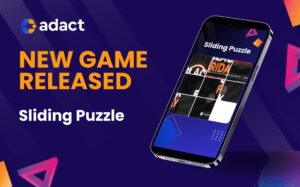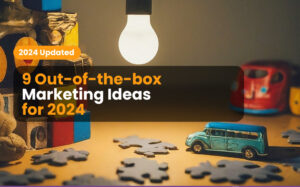How do you turn passive consumers into your loyal, fierce supporters?
The answer is simple—give them a way to interact with your product. Your job is to create a fun, exciting and memorable experience with your brand. Sometimes, this takes more than a traditional marketing campaign—you need games, quizzes, rewards, loyalty programs, personalized messages and many more.
Good examples of customer engagement strategies show the best how important it is to keep people alert and entertained. As a result, you may enjoy a revenue growth of up to 70%!
After all, users who enjoy your content and take part in your marketing activities are much more likely to become loyal customers.
But how do you achieve that?
It turns out that there are many examples of customer engagement strategies that can help you boost your business. In this post, we will take a closer look at five ways to build connections with your customers.
Let’s take a look!
What is customer engagement: A brief overview
Customer engagement is the process of building relationships between brands and their customers. How is this achieved?
Well, there isn’t one size fits all solution. You need to encourage dialogue, reach out to customers, ask them for their opinion, experiment with marketing and many more. To do all that, you need to understand and thoroughly analyze people’s interests, habits, preferences and needs. If you do it well, the results will be quite rewarding.
In fact, according to the report, fully engaged customers represent a 23% premium in share of wallet, profitability, revenue, and relationship growth over the average consumer.
Customer experience is not the same as customer engagement
Many people use the terms customer experience and customer engagement interchangeably, but they have many differences. Customer experience relates to how consumers perceive interactions with a business from start to finish.
On the other hand, customer engagement involves creating content, activities, or initiatives that drive user engagement. This makes for stronger brand loyalty and higher revenue potential for the business.
5 examples of customer engagement strategies
Customer engagement should be one of the main priorities in your overall marketing strategy, but how do you make it work? It turns out there is more than one customer engagement example that you can apply to increase customer satisfaction. Here are our top five picks:
1. Gamify your campaigns
Gamification is an effective way of engaging customers in a fun and entertaining way. Most people consider it to be the unicorn of modern marketing.
You can use it to introduce new products or services, encourage customer feedback, reward loyal customers, and more. The most popular types of game-based campaigns include the following:
- Wheels of fortune reward customers with discounts, freebies, or other prizes when they spin the wheel
- Quizzes and polls that let customers interact with your brand and share first-party customer data along the way
- Collectible rewards that give customers an incentive to complete tasks or spend more money on your products
These and many other gamification campaigns represent an amazing customer engagement example. Gamification is not a new trend, but modern tools make it easier to add this element to your marketing strategy.
Take Adact as an example.
Our platform enables users to design and launch gamified campaigns, helping them attract, engage, and retain customers. From puzzles and hoops to personality tests and trivia games, you can utilize Adact to maximize user engagement.
Our wheel of fortune is a great customer engagement example. With Adact, you can build this interactive campaign in minutes simply by customizing the existing template. The dashboard is user-friendly, which means you just need to set a few details before launching a brand new campaign. Here’s what you can tailor:
- The number of sectors on your wheel of fortune, adjusting it to the number of awards you plan to offer
- The design of each sector, customizing it according to the visual identity of your brand
- The award type and its value, such as discount codes or free merchandise
- The spin interval (i.e., how often customers can spin the wheel)
- Other elements of the game, including fonts, borders, dimensions, labels, and more
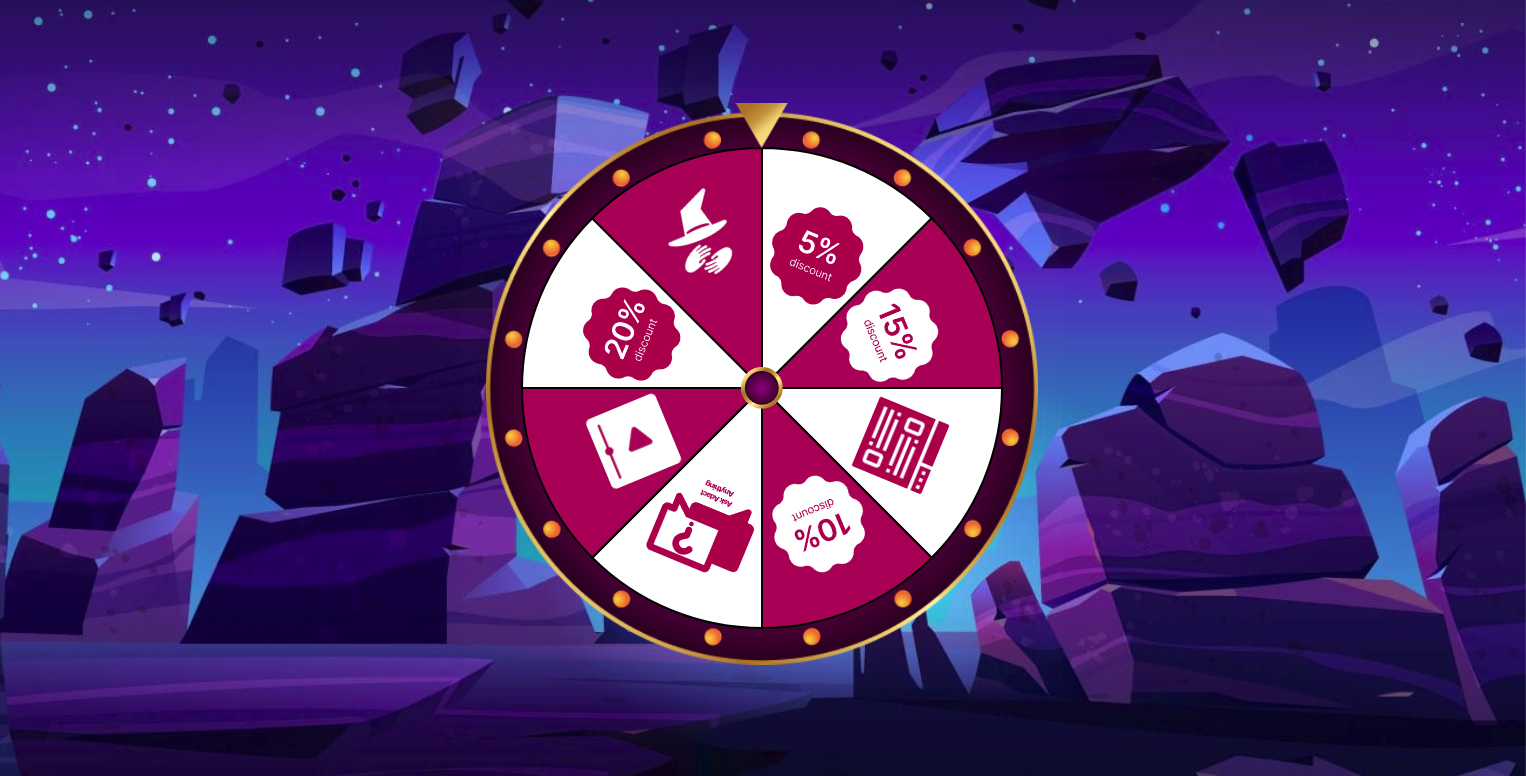
Wheel of fortune is a time-tested and popular gamification tactic. Adact helps you build a game that suit different contexts, campaigns, and business objectives.
This customer engagement example is good if you can’t afford costly tools that eat up a lot of resources. When you incentivize customers using a wheel of fortune, you get these results:
- Increased customer participation
- Higher conversion rates
- Maximized brand following
Wheel of fortune has unparalleled potential for positive gamification outcomes, making it one of the most powerful tools in the modern marketer’s arsenal. What’s best, this marketing trick can also help you engage conference attendees.
2. Create an exciting loyalty program
Loyalty programs made it to the second spot on our list of customer engagement examples. They make yet another way to engage users successfully and exceed customer expectations. How do we know it works?
Well, reports show that the average consumer is involved in 14 loyalty programs.
It turns out that the existing clients love extra incentives from their favorite brands. Loyalty programs are particularly useful if you offer rewards that are exclusive and tailored to the needs of individual customers. The key features of a great loyalty program include the following:
- Easy sign-up process: Make sure the onboarding is enjoyable and straightforward
- Personalized rewards: Tailor benefits according to customer preferences
- Social media sharing options: Promote customer participation by encouraging users to share their progress with friends on social media
- Affordable rewards: Don’t make customers wait too long to get any rewards
- Attractive deals: Offer discounts and exclusive offers to loyalty program members only
However, you’ll also need reliable software to launch a loyalty program.
And that’s how we get to Adact again.
Our platform is packed with features that make it easy for you to create and manage loyalty programs. You can create a branded game and automate the process of capturing, storing, and retrieving customer data.
After that, you are free to use user-related information to personalize customer experiences.
For example, our scratch cards proved to be a powerful customer engagement tool. Clients love them because they are simple but highly effective. Adact scratch cards are very easy to customize and design.
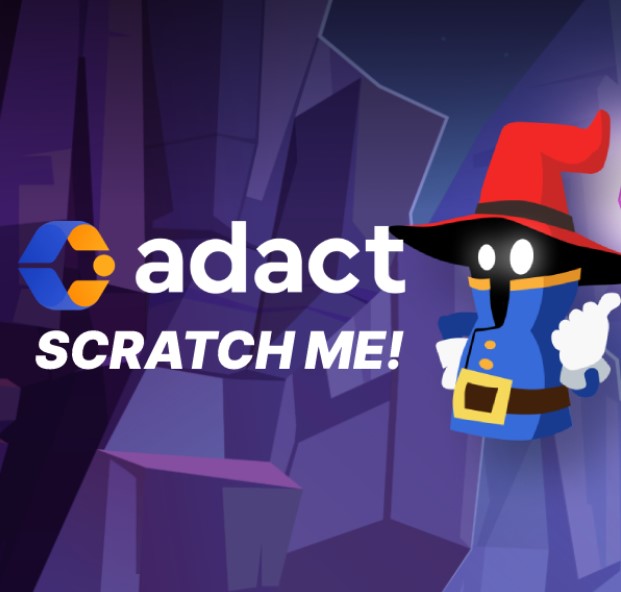
All it takes is to upload an image that customers will scratch when you start the campaign. Once they do it, they will reveal a special reward. From there, your customers will be able to redeem the offer without any additional hassle.
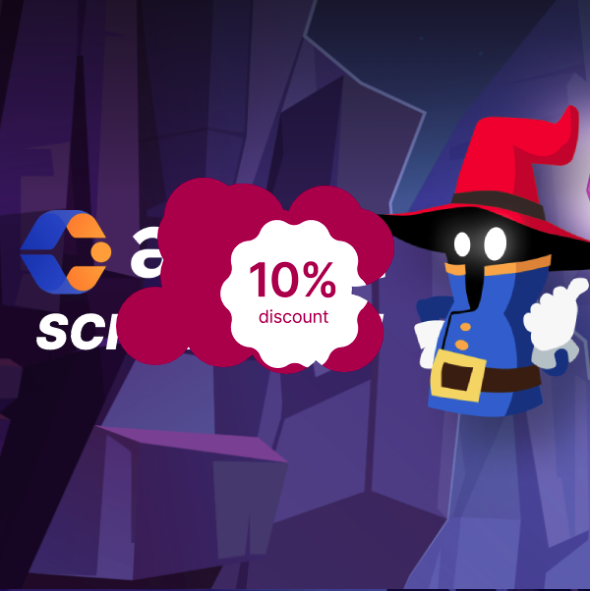
The best part is that Adact tracks customer engagement through detailed audience analytics. That way, you ensure that every loyalty program member gets a delightful experience. Here are only a few details you can see on our analytics dashboard:
- Unique page visitors
- Landing page visitors
- Unique leads
- Average gameplay time
These and many other insights will help you understand how your loyalty program is performing and adjust it accordingly.
All in all, Adact makes a perfect solution for businesses that want to drive customer engagement with loyalty programs. The platform is user-friendly and packed with features, making it a great choice for those who lack technical know-how or resources.
3. Personalize your messages
Personalization is a powerful marketing tool, so we have to add it to the list of customer engagement examples. This marketing tactic is more important than ever, but why is that so?
According to the survey, over 70% of users want companies to deliver personalized interactions, while 76% get frustrated when that doesn’t happen. There are lots of solutions to personalize your messages, but we will focus on four key tactics here:
- Take advantage of user-related information: Personalize interactions by collecting and analyzing customer data. With the right user-related information, you can make your messages more relevant to each individual.
- Approach each user timely and through the right channel: Make sure the timing and channel match your customer’s preferences. For example, a user of an online store may prefer to receive emails when it comes to sales updates or product recommendations. On the other hand, younger consumers may prefer social networking.
- Go multichannel: As we already mentioned, customers want to engage with brands through different channels. Make sure you cover all the popular ones like SMS, email, and social media. You don’t have to use all channels, but you must go where the target audience goes.
- Make use of dynamic content: Personalize interactions by using dynamic content. That means that you can change content according to each user’s preferences and behavior. You can also use dynamic content to increase customer engagement by displaying interesting visuals that are relevant to the message.
It’s hard to count all the benefits of personalized messaging, but we will point out a few major ones. Firstly, this customer engagement example proved to boost conversion rates. That’s because customers who receive tailored content are much more likely to engage with it.
Besides that, personalization stimulates innovation. Almost half of businesses use alternative marketing models to increase the personalization of products and make offerings more innovative. If you truly listen to customers, you will often come up with new and unique ideas.
At the same time, personalized messages increase brand loyalty. People feel valued when they receive personalized experiences, so they are more likely to become loyal clients. All things considered, it is clear that personalization can make customer engagement go sky-high.
Book a Demo

Using gamification in B2B marketing and development: myth or reality?!
How can you gamify serious business engagements? How do you do it cost-effectively? Is it even worth the effort?
1. We run a B2C campaign, which gives us 10.000 leads and each of them will bring in 100 euros. That’s 1M.
2. We run a B2B campaign, which gives us 100 leads and of them will bring in 10.000 euros. That’s still a million.
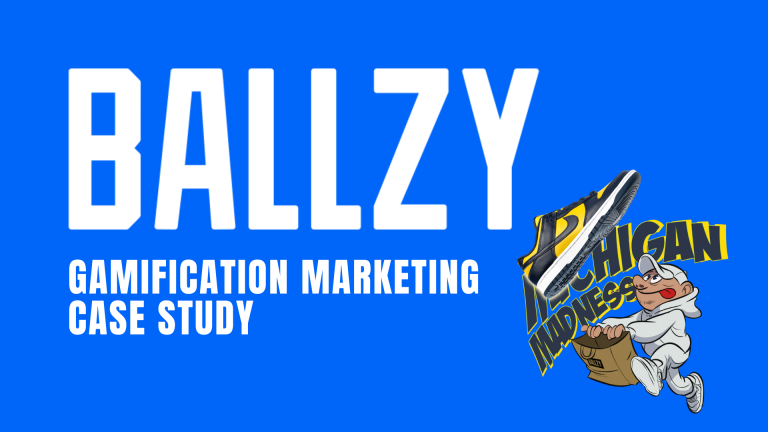
Road to success with gamification marketing | Ballzy case study
In the age of social media, marketers have had to get creative to stand out from the crowd. Cue gamification marketing: a technique that uses game mechanics to drive engagement and motivation. And it’s been a huge success! So what’s behind this new trend in marketing? How did Ballzy, a sneaker retailer implement it into their marketing strategy? If you’re looking for some ballsy inspiration from them, read on!

Innovating the way cities promote themselves – The City of Oulu gamification marketing case study
What comes to your mind when you think of Finland? Sauna, snow and possibly Angry Birds? (Yes, this world-famous game was really created in Finland, not in Silicon Valley). But there’s one more thing that should be on that list: innovative city marketing. Case in point: The City of Oulu. Located in the centre of the country, this city has been using creative methods to promote itself to students – with some impressive results. Keep reading to find out how they did it (and maybe steal a few ideas for your own city)!
4. Ask people for their opinion
Another customer engagement example we want to discuss is asking people for their opinion. Perhaps it sounds strange, but the idea behind this approach is quite simple. Customers prefer engaging with a brand when they believe that their opinion matters.
There are so many ways to ask your clients or followers for feedback, including surveys, polls, and reviews. And once again, you can do it all with Adact. The tool enables you to create surveys with custom fields, questions, and answers.
Here’s how it works – you just need to pick an opinion-focused template and type in the questions you want to ask. Besides that, you can also customize the design and add visuals in Adact, making your content more appealing and attractive.
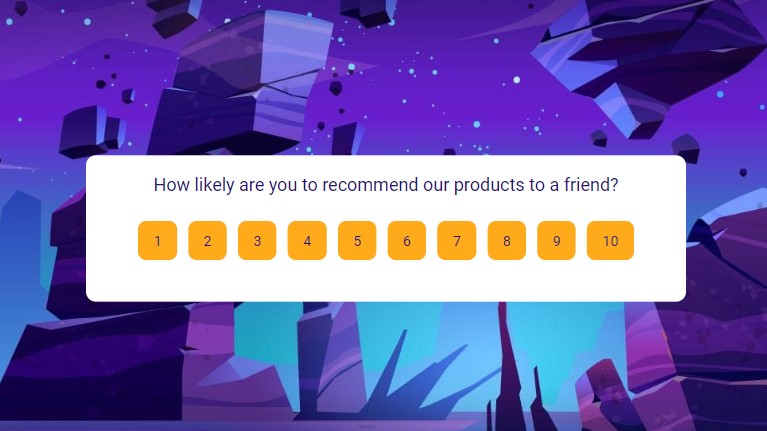
It’s an effortless way to collect user-related information, which is what makes opinion polls and surveys a great customer engagement example. The whole tactic gives customers a chance to interact with your content, so your brand becomes more human-like.
People feel appreciated when businesses ask them for advice and suggestions. It shows that the company values their input. After that, the sky’s the limit—all it takes is to assess data through Adact analytics, discover insights, and use that information to make better decisions.
5. Show appreciation to customers
Showing appreciation to customers is a subtle way to drive customer engagement. It’s especially valuable when it comes to building relationships with loyal followers and buyers. Although the concept sounds a bit unclear, there are some very specific ways to use this tactic.
Welcome emails
Appreciation starts as soon as you welcome a new customer. It’s important to thank them for subscribing or choosing your product or service on the very first interaction. Make sure that each welcome email contains the following information about your company:
- A brief company overview
- Your offers
- How customers can benefit from that
Welcome emails are extremely efficient—studies show that they generate four times more opens and five times more clicks than average email campaigns.
Encourage user-generated content
User-generated content (UGC) is the best way to show appreciation to customers. This type of content has two main benefits—it’s affordable, and it encourages customer participation.
For instance, you can create a hashtag campaign and ask people to share their experiences with a certain product or service. It creates an exciting environment that rewards participants while displaying your appreciation for their effort. Plus, UGC is one of the most powerful forms of social proof.
Send tailored gifts
Sending gifts is a great way to show gratitude because people appreciate it when someone remembers their special occasions. For example, you can send a small birthday gift to the customer who keeps engaging with your brand.
Another option is to send personalized tokens of appreciation in the form of discounts, vouchers, or exclusive offers. Each of these solutions will have a positive impact on brand loyalty and engagement.
Organize a customer appreciation party
Customer appreciation events can be a bit expensive, but they are also very effective. It’s a nice way to show customers that you genuinely care about them and appreciate their loyalty to the brand.
Such events offer you the chance to connect with customers on a more personal level and get valuable feedback about your brand. You can also use this opportunity to introduce new items or services to customers.
If you want to go even further, organize competitions or give away special prizes for participants.
Send thank you notes
Thank you notes are always a great way to show appreciation to the buyers. It’s especially valuable for engaging with repeat customers.
You can send thank you notes via email, SMS, postcard, or even through direct messaging on social media channels. Just make sure that your message is unique and relevant – emphasize the fact that you appreciate their loyalty and trust.
How to prepare your customer engagement campaign: Step by step
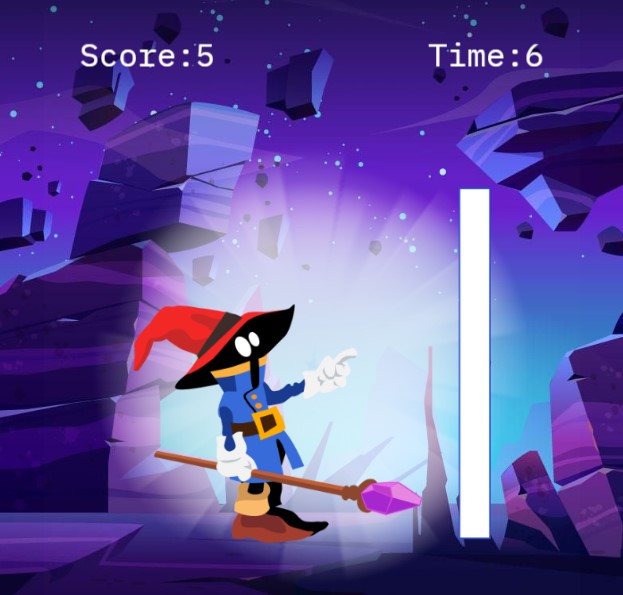
Some features of customer engagement remain the same regardless of the campaign type. In such circumstances, it is important to tailor your approach according to these characteristics. Let’s see the five key steps for preparing a customer engagement campaign:
Define campaign goals
Before you start any campaign, it is important to clearly define your goals and objectives. That’s the only way to actually achieve your plans. Our advice is to ask yourself a few questions:
- Are you looking to increase customer loyalty or brand awareness?
- Do you want to drive more leads?
- How long does it take to achieve your objectives?
When you answer these questions, you will be able to set realistic goals and create an actionable plan. Besides that, it is critical to identify your target audience before launching a campaign.
Try to focus on the right segment to design a relevant communication strategy that resonates with them. At the same time, you can collect customer feedback and boost engagement through personalization. You can do it by tailoring the content to their needs or providing incentives for taking action.
Go with multiple channels
Do you know that over 80% of consumers reported shopping across at least three channels in the first half of 2022? This means that you should focus your campaign on several channels to maximize its reach.
Combining email campaigns, mobile, social media, and other content forms will help you spread the message more effectively. It will also help you reach more customers, increase engagement rates, and grow conversions.
Add gamification elements to the campaign
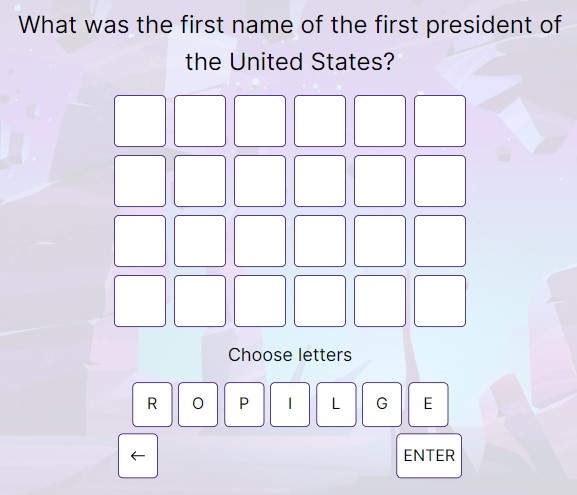
The best customer engagement examples prove that gamification is the top tool for improving customer experience. You can include an exclusive loyalty program, points systems, leaderboards, or rewards for taking action that will turn your campaign into an exciting challenge.
You can create more than 30 types of campaigns using Adact. The platform makes it easy to create and launch campaigns from scratch, so you can maximize engagement and customer loyalty. At the same time, the tool can help you easily include gamification in your conference boot—if you ever need to.
Let social networks work for you
There are almost 4.6 billion social media users in the world today. What does it mean? Well, it means that practically all of your customers are out there, so you just have to leverage the power of social media.
Social networks are perfect for boosting brand awareness, building customer relationships, or collecting feedback. You can choose channels like Facebook, Twitter, Instagram, and LinkedIn to engage customers and stay in touch. Besides that, it’s a great tool for word-of-mouth advertising – you can expect a whole lot of new followers if you do it right.
Create a timeline and track the results
Having a timeline is a major aspect of a customer engagement strategy. You should decide when to start your campaigns and have deadlines for each step of the process:
- Tool selection
- Content creation
- Campaign launch
- Social media activities
- Follow-up actions
By tracking your results, you will be able to understand what works and what does not. Set up essential metrics such as conversions, customer retention rate, and other key performance indicators to continuously monitor the progress of your campaign.
After that, it’s easier to adjust your approach according to the feedback you get from customers.
Conclusion
Customer engagement is the key precondition for building a wide base of loyal clients. The good thing is that loyalty programs, gamification, and similar campaigns have a huge potential to increase customer engagement.
They make a tool that enables you to nurture customer loyalty, so you can maximize revenue in the long run. And with the right customer engagement tool at your disposal, this process becomes much easier.
Our platform, Adact, can help you improve customer engagement by designing interactive campaigns across multiple channels. It offers over 30 user-friendly ways to encourage customer interactions.
Sign up for Adact now to discover the true potential of your customer engagement strategy.
Book a Demo

Conquer exhibitions with gamification marketing
Gamification is a powerful tool for attracting and retaining visitors at exhibitions. Learn how to use game-based marketing techniques to create a more engaging and motivating experience for your audience.
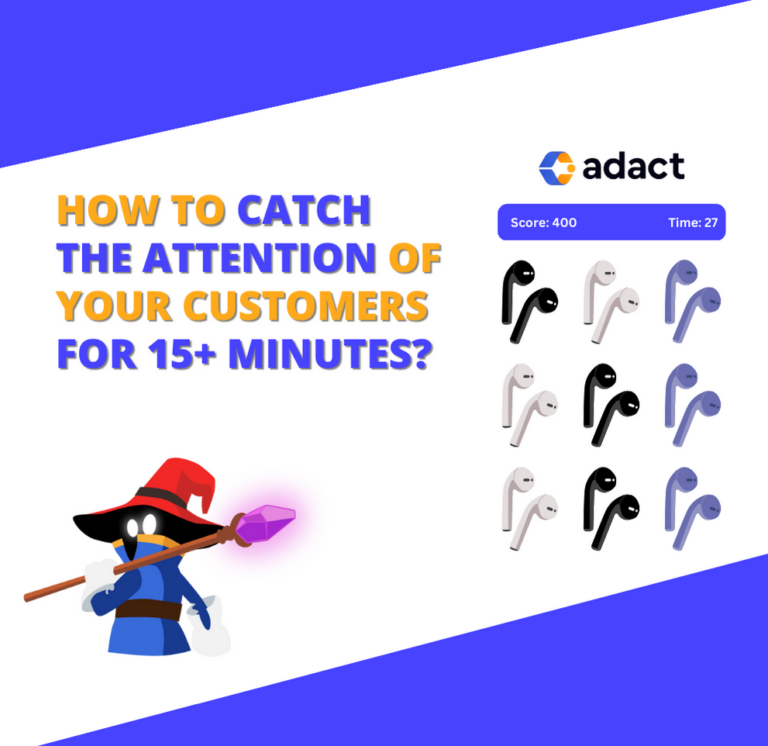
How Euronics’ Candy Crush engaged customers for over 15 minutes
Studies have shown that games can be up to 80% more effective at getting people to engage with your brand than traditional advertising methods. Euronics got inspired by Candy Crush and decided to use it to engage its customer for over 15minutes!

How to engage 10000 FMCG customers in 1 day? – Kaubamaja Case Study
Retail companies are always looking for ways they can stand out from their competition. This case study tells the story of how a large department store in Estonia used gamification to promote one of their flash sales, resulting in engagement and interaction levels that exceeded all expectations.



